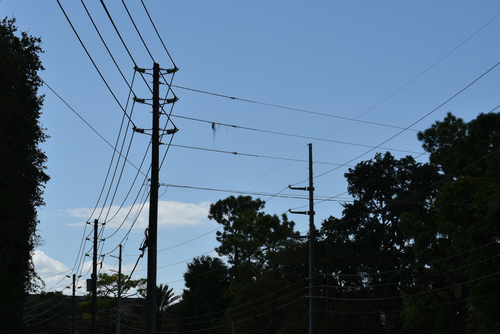Florida Power and Light touts $5B spent on grid reliability efforts over last 15 years

In response to the devastation wrought by Hurricane Wilma in 2005, Florida Power & Light Company (FPL) began investing in the grid, looking to make it smarter and more resilient in the face of successive storms, an effort the company now says has benefited from $5 billion.
In Wilma’s wake, this first took the form of the Storm Secure Plan, a long-term effort to improve reliability and face down hurricanes and other inclement weather. That plan has continued to expand over time, encompassing the hardening of main power lines, updates for and replacement of distribution power poles as they fell behind current standards, annual vegetation maintenance along 15,000 miles of power lines, and swapping wooden transmission structures for concrete or steel structures.
A separate initiative, known as the Energy Smart Florida Program, yielded smart meters, automated switches, and other intelligent devices to detect problems and restore power quicker. More than 5 million customers have benefited from all of these efforts.
“Wilma was a turning point,” Manny Miranda, FPL senior vice president of power delivery, said. “Hurricane Andrew was more powerful, but Wilma’s damage spread across a much larger area and capped a brutal 16 months of hurricanes. No utility is stormproof, but we knew we needed to make significant changes to the energy grid to speed our restoration efforts and get the lights back on faster for our customers.”
Wilma struck southwest Florida as a Category 3 storm, wiping out power for 3.2 million FPL customers across 21 counties and blasting the state with around $20 billion of damage overall. It took 18 days for FPL to restore power.
However, FPL’s efforts are having an effect, comparing that 18-day restoration time to the 10 days it took FPL to restore power after Hurricane Irma in 2017 — a stronger storm that hit even more customers.
For that reason, FPL continues to push forward on new efforts, such as the Storm Secure Underground Pilot Program. That program — launched in 2018 — aims to replace overhead power lines that weren’t a part of FPL’s hardening program with underground lines in neighborhoods that have frequently faced reliability factors over the years, such as those caused by vegetation. This could lead to more widespread underground work in the future. Still, the company believes it will help address one of the leading causes of power outages: overhead power lines taken out by downed trees, branches, and other debris.
